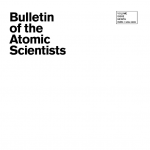Climate education in the classroom: cloudy with a chance of confusion
By Glenn Branch, Josh Rosenau, Minda Berbeco | March 3, 2016
What affects the way in which climate change is presented in science classes in public middle and high schools in the United States? A new survey suggests that both individual and community factors play a role. The most effective way to improve climate change education is by improving teacher training in the field of climate science. But there are systemic obstacles to teaching about climate change. New state science standards are helping to diminish such obstacles, but these standards, in turn, are provoking a political backlash across the nation. As with public action on climate change in general, public action on climate change education will be furthered by a recognition of the scientific consensus – and what that consensus means.
Together, we make the world safer.
The Bulletin elevates expert voices above the noise. But as an independent nonprofit organization, our operations depend on the support of readers like you. Help us continue to deliver quality journalism that holds leaders accountable. Your support of our work at any level is important. In return, we promise our coverage will be understandable, influential, vigilant, solution-oriented, and fair-minded. Together we can make a difference.
















